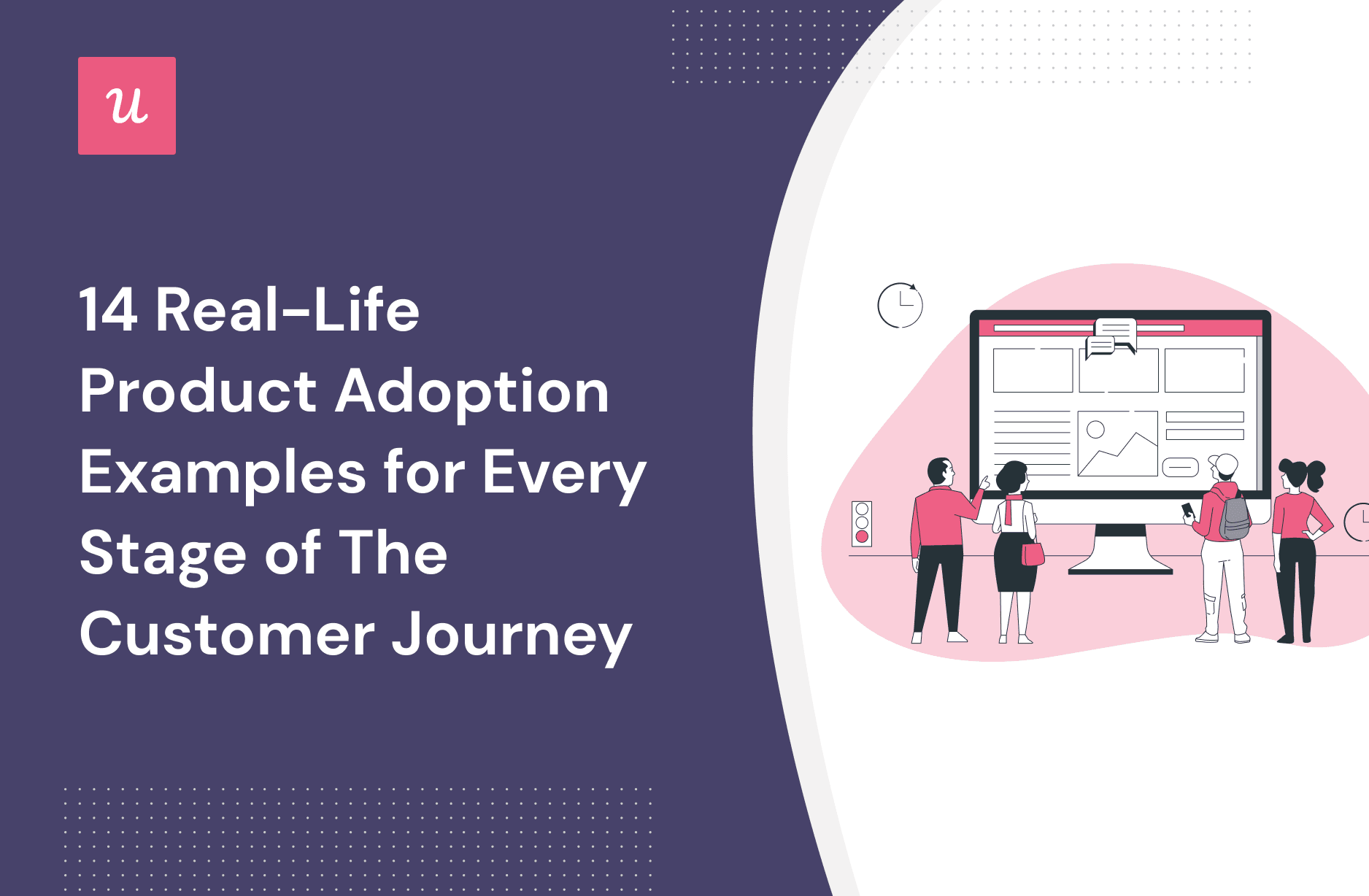
14 Real-Life Product Adoption Examples for Every Stage of The Customer Journey
Product adoption is crucial for the success of SaaS companies because it secures users to be long-term customers. But what are some product adoption examples you can learn from?
Improving feature adoption is easier said than done. That’s why we’ve compiled multiple examples of successful companies nailing product adoption across the entire user journey.
That said, let’s talk about the fundamentals:
Try Userpilot Now
See Why 1,000+ Teams Choose Userpilot

Summary of product adoption examples
- Product adoption is a step-by-step process to make users comfortable and habitual with a new product.
- The product adoption curve is a distribution curve with five essential segments for the product adoption process. They include innovators, early adopters, early majority, late majority, and laggards.
- The product adoption process follows a series of stages the user must go through, and they include:
- Awareness. Becoming aware of the product’s existence through branding and marketing campaigns.
- Interest. Searching for more information to see if it fits user needs.
- Evaluation. Considering the pros and cons of the product before trying it.
- Trial. Limited usage of the product as a test.
- Activation. Experiencing the value of the product and engaging with a core feature.
- Adoption. The decision to keep using it or abandon it.
- Here are real-life product adoption examples from successful companies for each stage:
- Using social media ads to expand brand awareness, like Slack.
- Installing chatbots on your website to engage leads, like Hubspot.
- Offering educational webinars showcasing the value of your product, like Userpilot.
- Providing live demos that include proper training for users and make the product stand out, like Airfocus.
- Removing friction from the signup process with SSO, like Miro.
- Giving access to premium features during the free trials so users can experience the full potential of your product, like Toggl.
- Using onboarding checklists to help users reach activation as soon as possible, like Userpilot.
- Adding interactive walkthroughs to make the onboarding process more engaging, like Kommunicate.
- Creating onboarding videos and allowing users to choose their path, like Tolstoy.
- Giving quick access to video tutorials across the app like Loom.
- Introduce secondary features with in-app tooltips, like Airtable.
- Communicating with your user base with new feature announcements to overcome feature blindness, like Userpilot.
- Providing self-service support with an in-app knowledge base, like Miro.
- Leveraging gamification to engage customers with your product, like Asana.
- Some product adoption KPIs that can help you get the big picture includes: Time to value, feature adoption rate, customer engagement score (CES), weekly and daily active users, and churn rate.
Which of these product adoption examples reflects your biggest challenge?
What is product adoption?
Product adoption is a step-by-step process to make users comfortable and habitual with a new product. It converts prospects doing business the old way into customers who use your product daily.
Once your customers have successfully made your product a part of their lives, you’ll build a base of advocates who’ll stay with your brand and recommend it to their network through word-of-mouth.
What is the product adoption curve?
The product adoption curve is a concept created by Everett Rogers back in 1962 and further developed by Geoffrey Moore in 2014. It illustrates the distribution of different types of technology users.
In SaaS, as you develop your product and achieve product-market fit, you must consider the five user segments so you can improve product adoption and grow your business. They include:
- Innovators. Innovators (2.5% of the market) are excited about trying products and testing new technology. They’re important for software development to get early feedback, but they usually don’t stick around.
- Early adopters. Early adopters (13.5%) have a greater need for your product and are willing to spend resources on a great solution. Their feedback is critical as it’s more oriented toward solving a problem and getting a job done rather than technical aspects.
- Early majority. The early majority (34%) is the larger segment of potential customers, and they’re only interested in a product that’s already established and has no risk of failing. So you must gain their trust with early success in order to cultivate loyal customers.
- Late majority. The late majority (34%) is as large and risk-averse as the early majority. However, they’re less likely to get invested in a brand, thus making them more intolerant of technical issues and bad fits.
- Laggards. The laggards (16%) resist change and are comfortable with their current processes. They’ll only change when it becomes a pressing need.
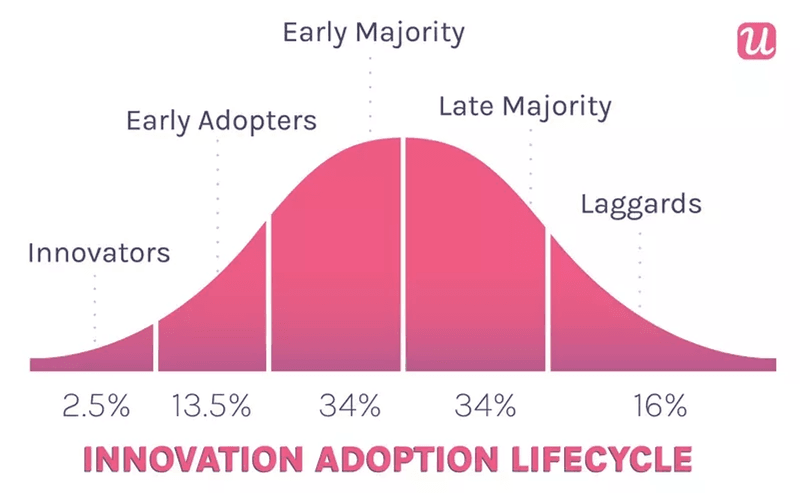
What are the stages of the product adoption process?
Similar to the customer journey, the product adoption process follows a series of stages the user must go through.
Your user onboarding process must guide users through all product adoption stages.
Most people split the product adoption process into five stages. But we think it misses out on product activation, so it turns out like this:
- Awareness. Becoming aware of the product’s existence through branding and marketing.
- Interest. Searching for more information to see if it fits user needs.
- Evaluation. Considering the pros and cons of the product before trying it.
- Trial. Limited usage of the product as a test.
- Activation. Experiencing the value of the product and engaging with a core feature.
- Adoption. The ultimate decision to keep using it or abandon it.
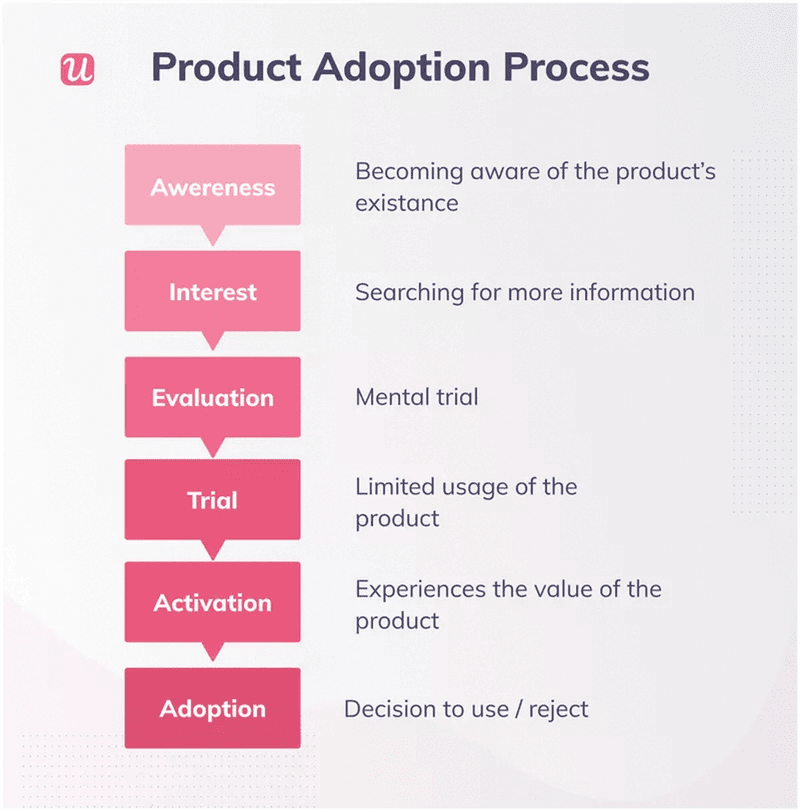
Now, what should your strategy look like during these stages?
Let’s go over some product adoption examples for each of them.
Real-life product adoption examples at the awareness stage
The awareness stage is all about communicating the value proposition of your product. Like solving a problem your audience knows (or didn’t know) they have or helping them achieve a desired result.
This stage is mostly covered in marketing, for example:
Slack catches the eye of its target audience with social media ads
Once you find out where your target audience spends most of their time, you can leverage social ads to expand your brand awareness.
In this case, Slack keeps its ad messages simple by giving you a clear benefit upfront. The marketing team knows that people tend to overcomplicate their work when they don’t use a central workspace, so the copy is focused on positioning the product as the solution for a simpler life at work.
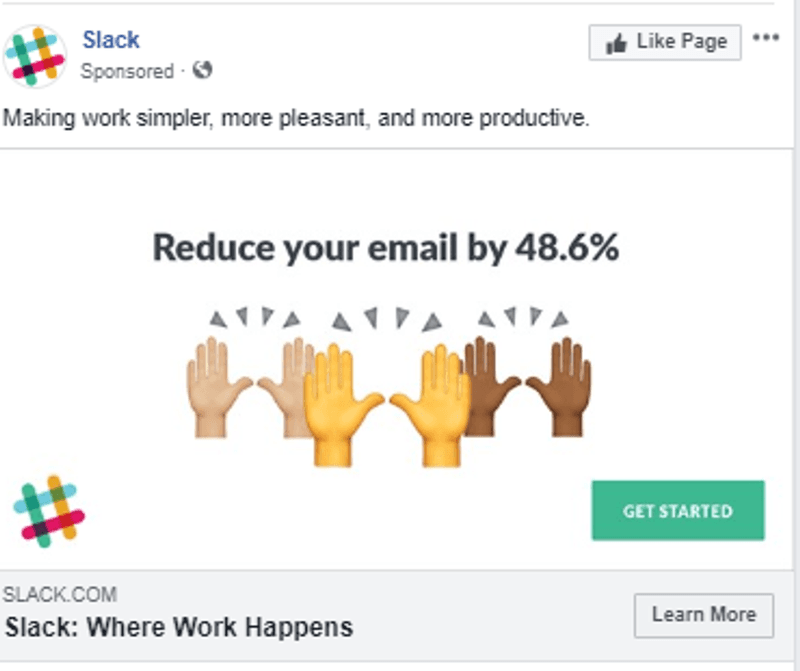
Real-life product adoption examples at the interest stage
During the interest stage, your audience is already invested in their problem and is actively looking for solutions. Here, the marketing and sales team’s job is to nurture the leads with educative content, valuable resources, and trust building. For example:
Hubspot uses chatbots to engage leads with conversational marketing
Once you catch the interest of a potential customer, they’ll start researching you by visiting your website.
Hubspot’s team knows this is an opportunity to provide value upfront, so they installed a chatbot that the prospect can interact with, so they can learn everything they need. Including information on features, plans, free tools, and training, and can even connect you with a Hubspot expert.
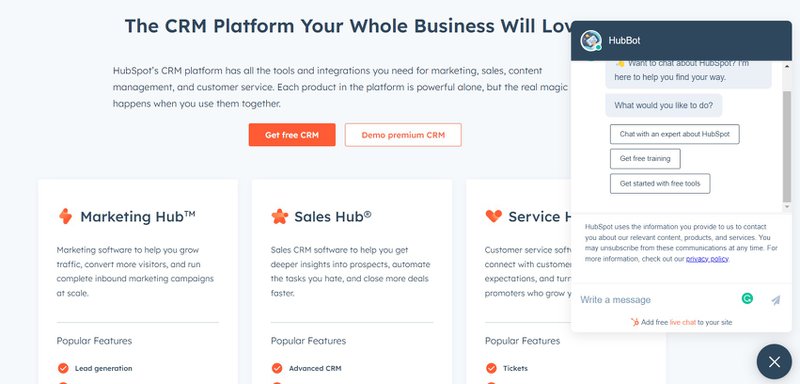
Real-life product adoption examples at the evaluation stage
At the evaluation stage, the user has already gathered everything they need to know about you. Now, they are reviewing it and comparing it with your competitors to see if you’re worth it.
Userpilot offers educational webinars to website visitors
One of the many tasks you need to do during the evaluation stage is to keep educating your leads with content that showcases the value of your product.
For example, Userpilot (a product growth platform) hosts educational webinars so users in the evaluation stage can learn about important topics such as user onboarding, customer success, and product-led growth—teaching the audience how to leverage Userpilot to solve the problems presented.
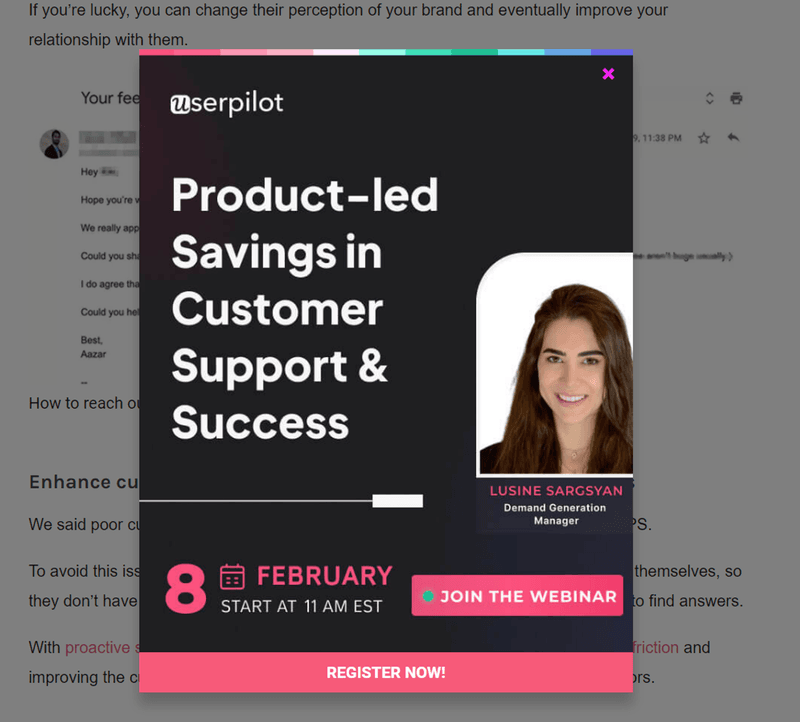
Airfocus uses live demos to showcase their product value to a prospect
Although product demos can be part of the trial stage, they’re also used to show the value of your product.
Airfocus, for example, offers a live demo where they explain how they differentiate from the competition in terms of features and pricing plans while training your users on how to use the software in real-life sessions.
These demos are an unbeatable way to make potential customers more confident about their purchase decisions (making them more likely to stay.)
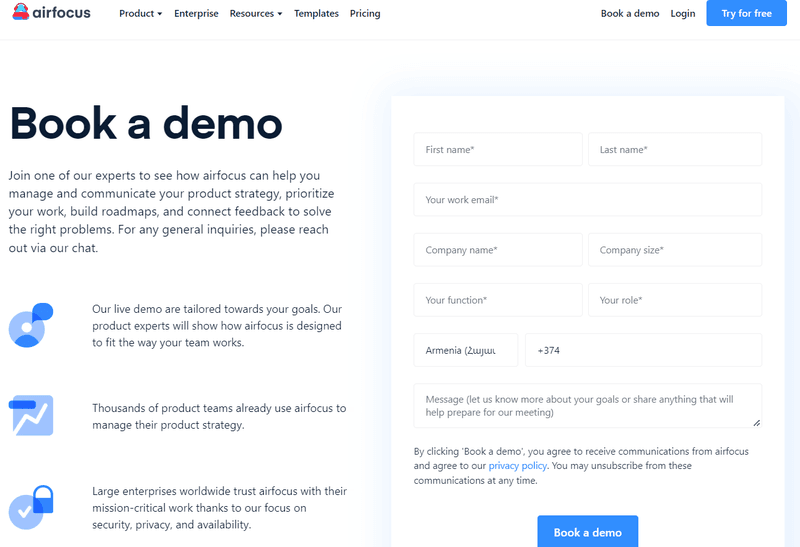
Real-life product adoption examples at the trial stage
In the trial stage, the customer decides to give your product a go to see if it fits their workflow and business model.
Here, the less friction, the better. For example:
Miro makes the signup process as frictionless as possible
To start removing friction during the trial phase, you want to start with the signup process.
Miro understands the importance of having an effortless signup process, which is why you can easily sign in with plenty of SSO options like Google, Slack, Apple, and Facebook. While keeping it on a signup page with a clean and eye-appealing design.
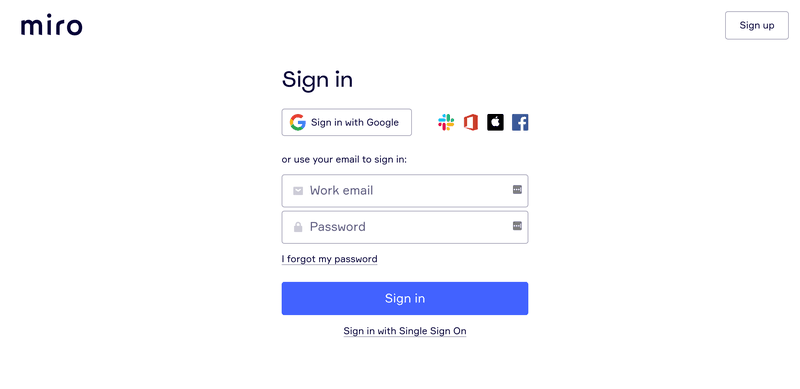
Toggl gives all users access to a premium plan for a limited time
Many times, users don’t know what plan will fit them best. So to reduce any friction during the trial, you want your users to experience the full value of your product upfront before they make a decision.
This is why Toggl—despite having both freemium and premium tiers—automatically grants access to premium features for 30 days, no matter what plan the user chooses first (a.k.a, a reverse trial).
This helps users experiment with the full capabilities of the product and then decide what plan will satisfy their needs.
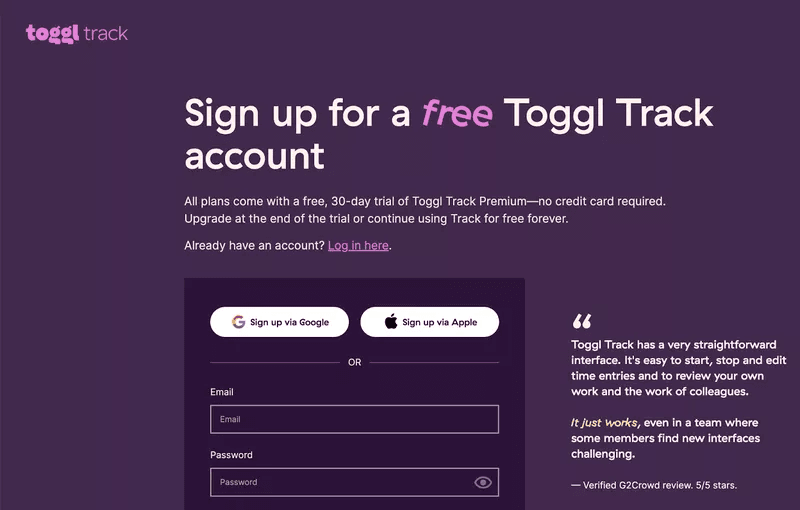
Real-life product adoption examples at the activation stage
The activation stage is when the user realizes the value of your product while using it, and it’s essential to make users choose your product over the rest.
At this point, you need to ensure you’re providing as much value to your customer as possible during the onboarding process. For example:
Userpilot drives users to the activation point with checklists
When you sign up for Userpilot, you’ll first see an onboarding checklist with a progress bar and some checked tasks.
It works because it is a UX design practice to add a progress bar and dummy tasks (steps already crossed out) to make the user feel like they’ve made progress. And—according to the Zeigarnik effect—our brain remembers unfinished tasks with ease, giving us a higher motivation to finish something we already started.
This way, users are more likely to engage with specific features and achieve the value realization phase.
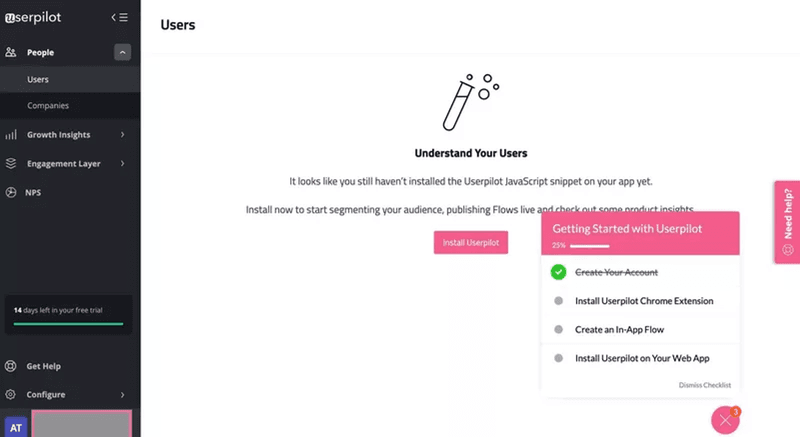
Kommunicate reduces time to value with interactive product tours
Another way to provide value is to present your product features in an engaging way.
In this example, instead of showing a generic that users are likely to skip, Kommunicate used Userpilot to implement interactive walkthroughs to hand-hold users across their app, remove friction, and train them to use the tools.
Interactive walkthroughs are more engaging and likely to improve product adoption during the activation stage. It responds to in-app behavior in real-time, so you can trigger tooltips when the user is more likely to need them. Instead of overwhelming the user with information they won’t retain.
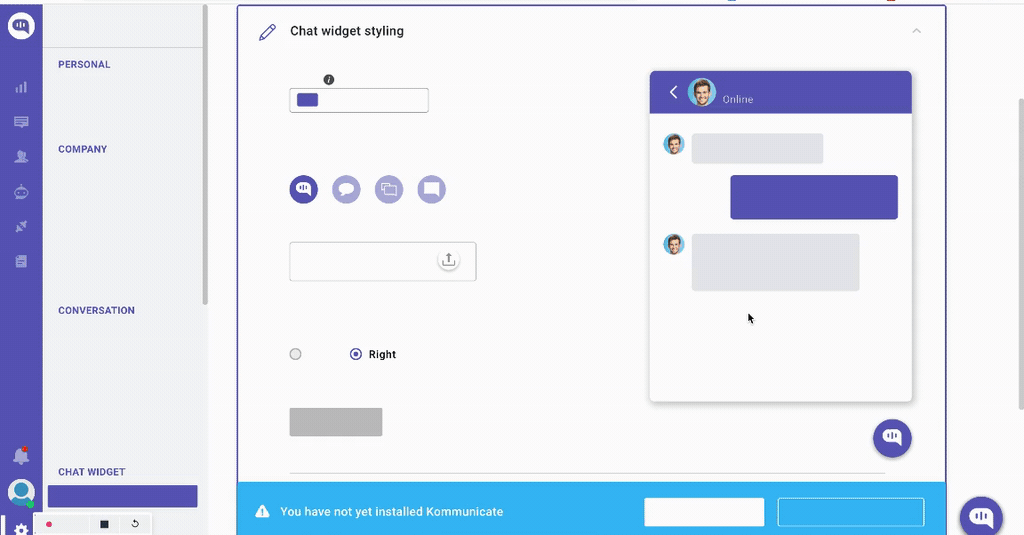
Tolstoy personalizes onboarding by letting users choose their own paths
Personalizing the onboarding process is another great way to achieve activation faster.
In Tolstoy’s case, they not only show interactive onboarding videos to new users, but they also allow you to choose your path—which humanizes the experience with some personal touch and friendly faces.
So instead of triggering a sequence of tooltips, you should probably try producing onboarding videos to elevate your customer experience to the next level.
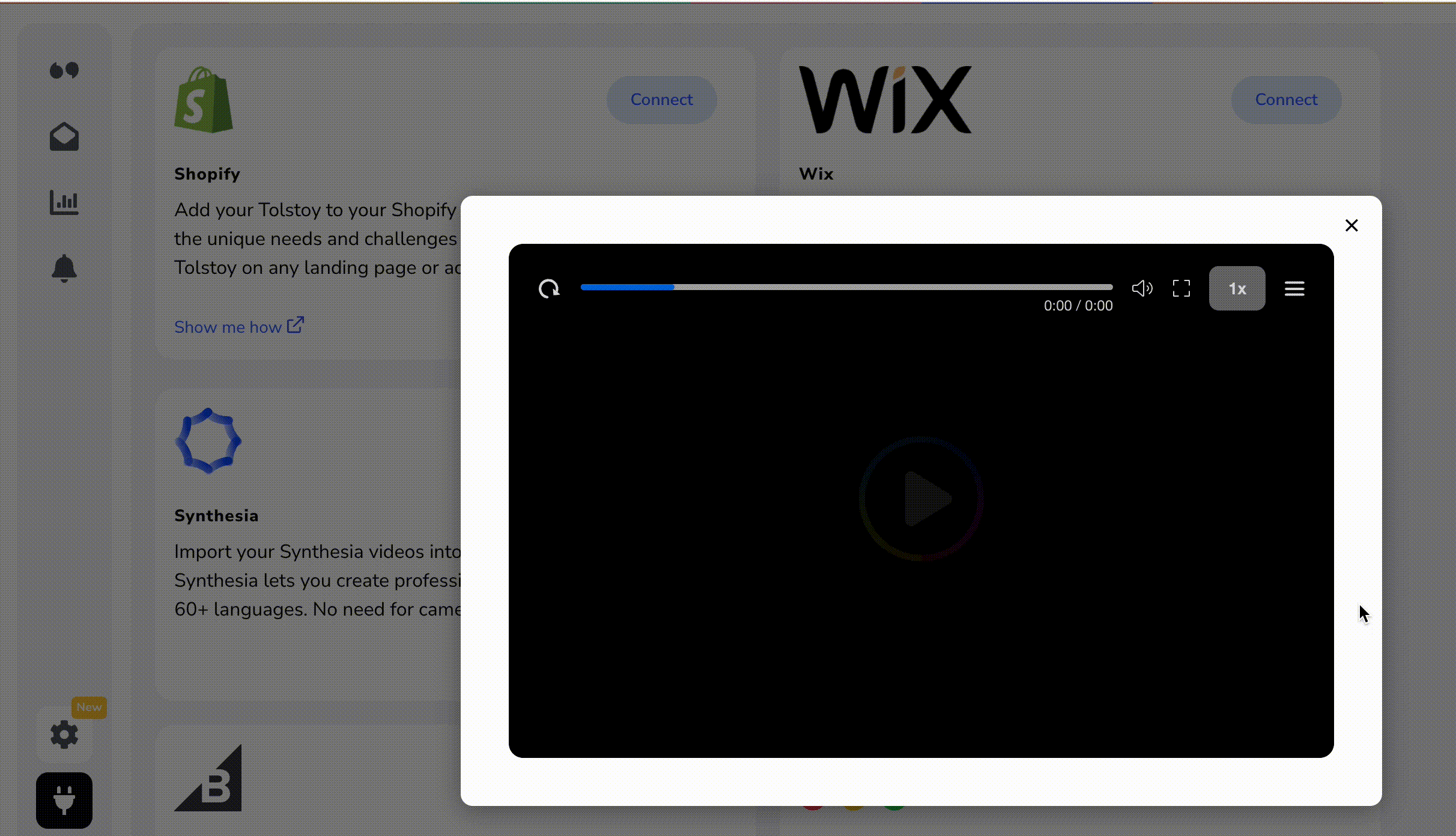
Loom empowers users with short video tutorials
Video tutorials are great for customer education, as they can easily remove friction before the activation point. They soften the learning curve since users can see the process in action.
In Loom’s dashboard, for example, you can quickly access their video tutorials without navigating a clunky resource center. And it works great because these videos address common obstacles and help users feel supported.
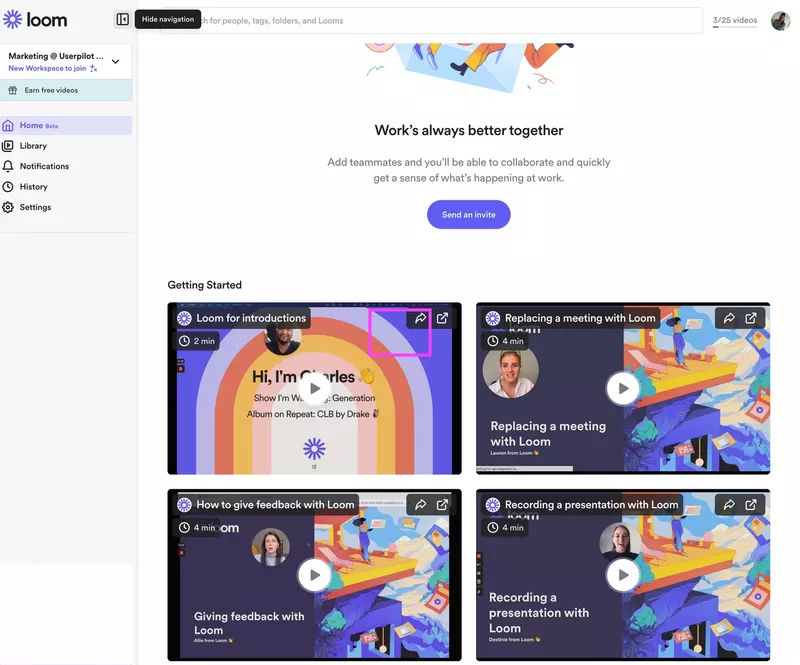
Real-life product adoption examples at the adoption stage
During the adoption stage, the user has finally decided to adopt your product and make it part of their life.
Your job doesn’t stop here. Now you should help your existing customers unlock the full potential of your app and maximize your customer lifetime value (CLV). For example:
Airtable uses tooltips to introduce users to secondary features
As said earlier, your job doesn’t stop at the adoption stage, and now you must engage users with secondary onboarding so they can finally adopt your product.
Airtable, for example, doesn’t stop their onboarding process when the user adopts 1-2 core features, they keep triggering in-app prompts to encourage you to try different use cases for it. Just like this contextual tooltip incentivizing you to try another view:
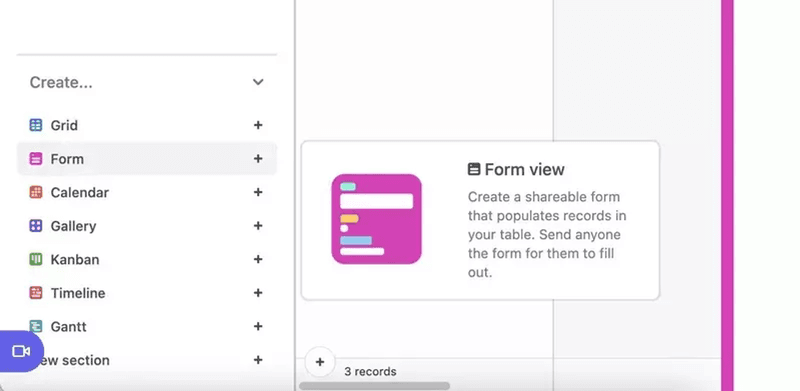
Userpilot promotes new features with modals
SaaS customers are usually feature-blind, so they’ll stick to their routine work and easily miss out when new tools are launched.
One way to overcome this problem is by communicating with new feature announcements, like Userpilot.
You can use a subtle tooltip for small changes or a nice modal like the screenshot below when announcing bigger launches.
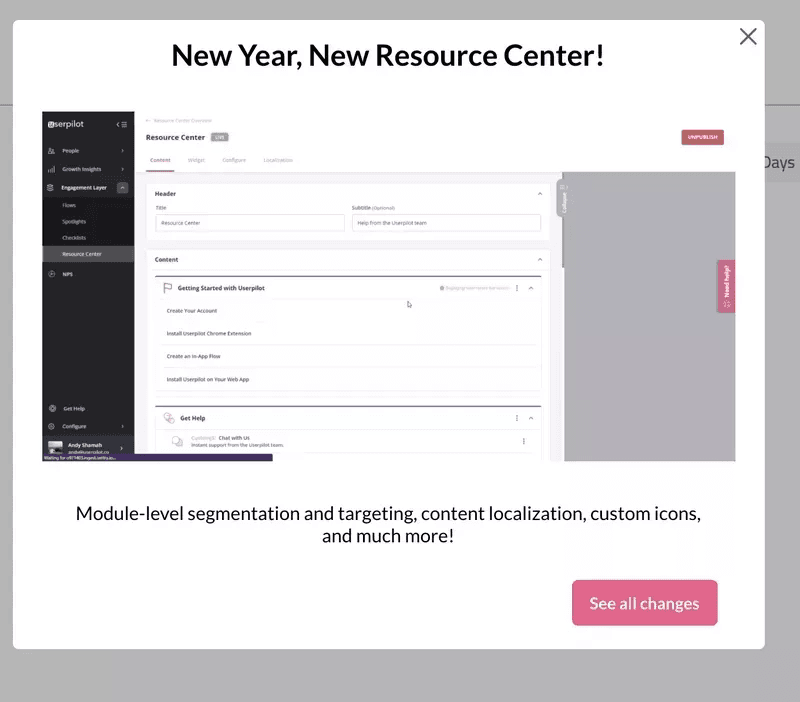
And to ensure your mobile users aren’t left out, you can also create mobile-optimized announcements customized to your brand with Userpilot’s editor without any coding required.
Miro provides consistent guidance through its extensive knowledge base
Once your customers have adopted your product, it doesn’t mean they’re free from friction.
To solve this, you should also offer self-service support for stuck users—just like Miro.
Miro’s has a well-structured knowledge base with various resources, such as webinars, tutorials, the latest news, and instant access to your customer support team.
This way, customers don’t have to leave your app and browse your website to find the answers they need.
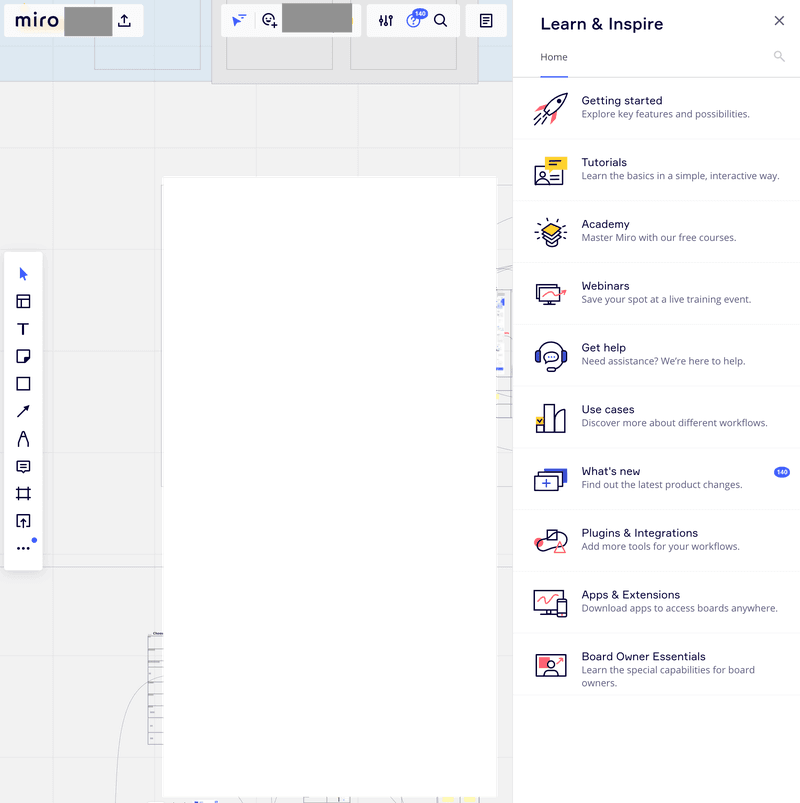
Asana creates engagement loops by applying gamification principles
An engagement loop is an experience that motivates users to take action and continues to provide positive reinforcement to ensure they take the next step.
With gamification and emotional design, you can add elements such as badges, points, and levels for a more fun product experience—creating a positive loop in the user.
In this case, Asana’s unicorn animation is a great example.
This animation appears every time you complete a task, which reinforces a positive behavior with a dopamine hit, encourages repeated engagement with your app, and finally drives better adoption.
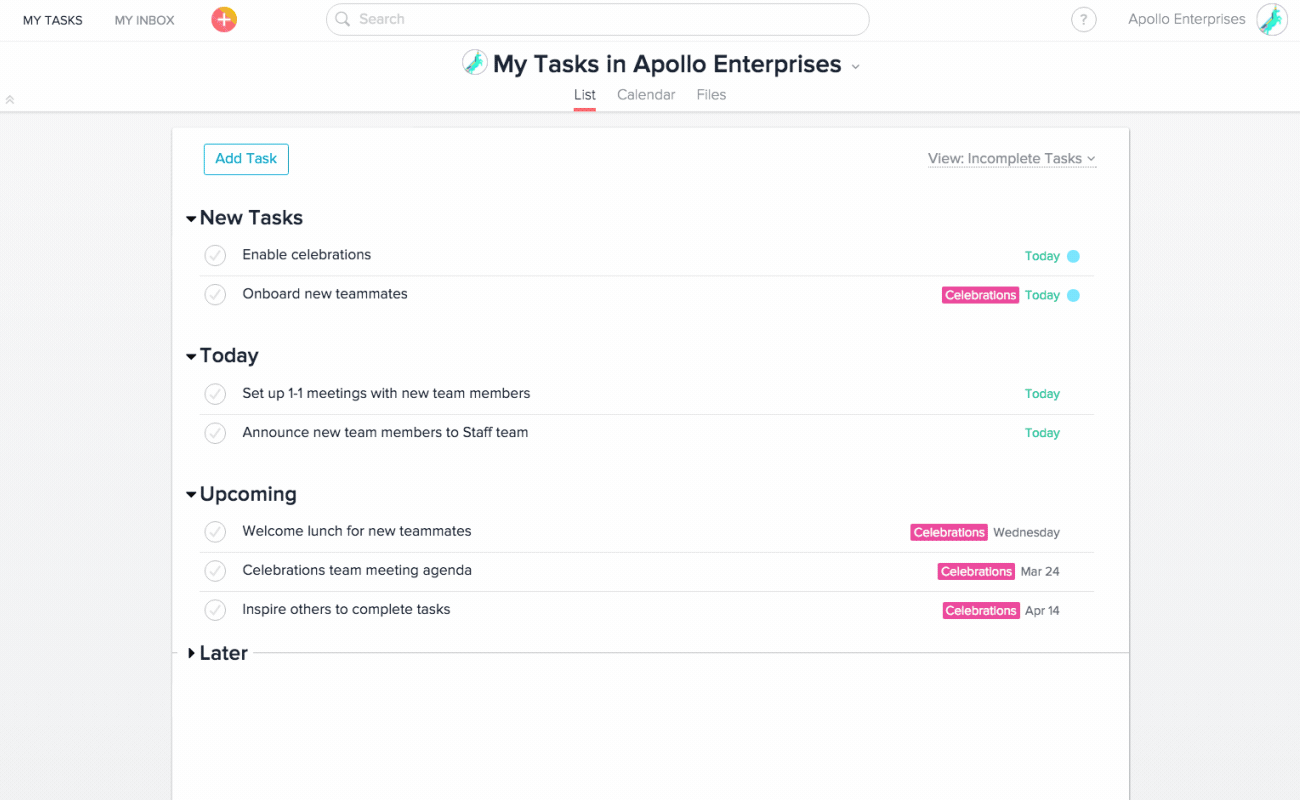
Key product adoption metrics and KPIs to track
Now that you know how improving adoption looks like, you might wonder how to measure product adoption so you can track your success.
And while you can’t read your user’s minds, there are some KPIs that can let you see the big picture, such as:
- Time to value. Refers to the time it takes for a user to realize the expected value of your product. For an effective adoption, you need this metric to be as short as possible.
- Feature adoption rate. It’s the percentage of user logins who engaged with a specific feature. Letting you know how many users are successfully adopting your product.
- Customer engagement score. Measures how engaged your existing users are. Each engagement with your product is reflected through a score based on action or inaction.
- Daily and weekly active users. Reflects the number of active users who are logging in on a daily and weekly basis.
- Churn rate. The number of customers who stopped paying or using your product/service over a specific period. It’s the opposite of customer retention, so you want to reduce churn as much as possible for a better adoption process.
Wrapping up
In SaaS, adoption is as important as acquiring new customers.
Thankfully, the product adoption examples we reviewed today should be enough to help you improve your strategy.
So instead of relying on the dev team to implement in-app experiences the way you want, why not try a Userpilot demo to see how you can improve adoption?






